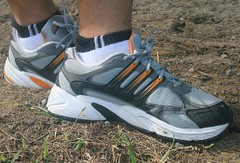 The average person has about 5.5 litres of blood. Although blood is liquid, about 45% of it is made up of solid particles held in suspension. The remaining 55% is a straw-coloured fluid called PLASMA. The solid matter in blood consists of:
The average person has about 5.5 litres of blood. Although blood is liquid, about 45% of it is made up of solid particles held in suspension. The remaining 55% is a straw-coloured fluid called PLASMA. The solid matter in blood consists of:- Red blood cells (erythrocytes)
- White blood cells (leucocytes)
- Platelets (thrombocytes)
THE PLASMA
The plasma is a pale yellowish liquid. About 90% of plasma is water in which a complex mixture of various substances is dissolved. These substances are:
The plasma is a pale yellowish liquid. About 90% of plasma is water in which a complex mixture of various substances is dissolved. These substances are:
- Soluble proteins: serum albumin, serum globulin, fibrinogen, prothrombin and antibodies (fibrinogen and pro-thrombin play an important role in blood clotting whereas antibodies are involved in fighting diseases).
- Dissolved mineral salts: chlorides, bicarbonates, and sulphates and phosphates of sodium and potassium. All these occur as ions in the plasma. CALCIUM SALTS are also present which are essential for blood clotting.
- Food substances such as glucose, amino acids, fats and vitamins.
- Excretory products such as urea, uric acid and carbon dioxide.
- Hormones such as Insulin, Glucagon, Adrenaline and Anti-Diuretic Hormone.
